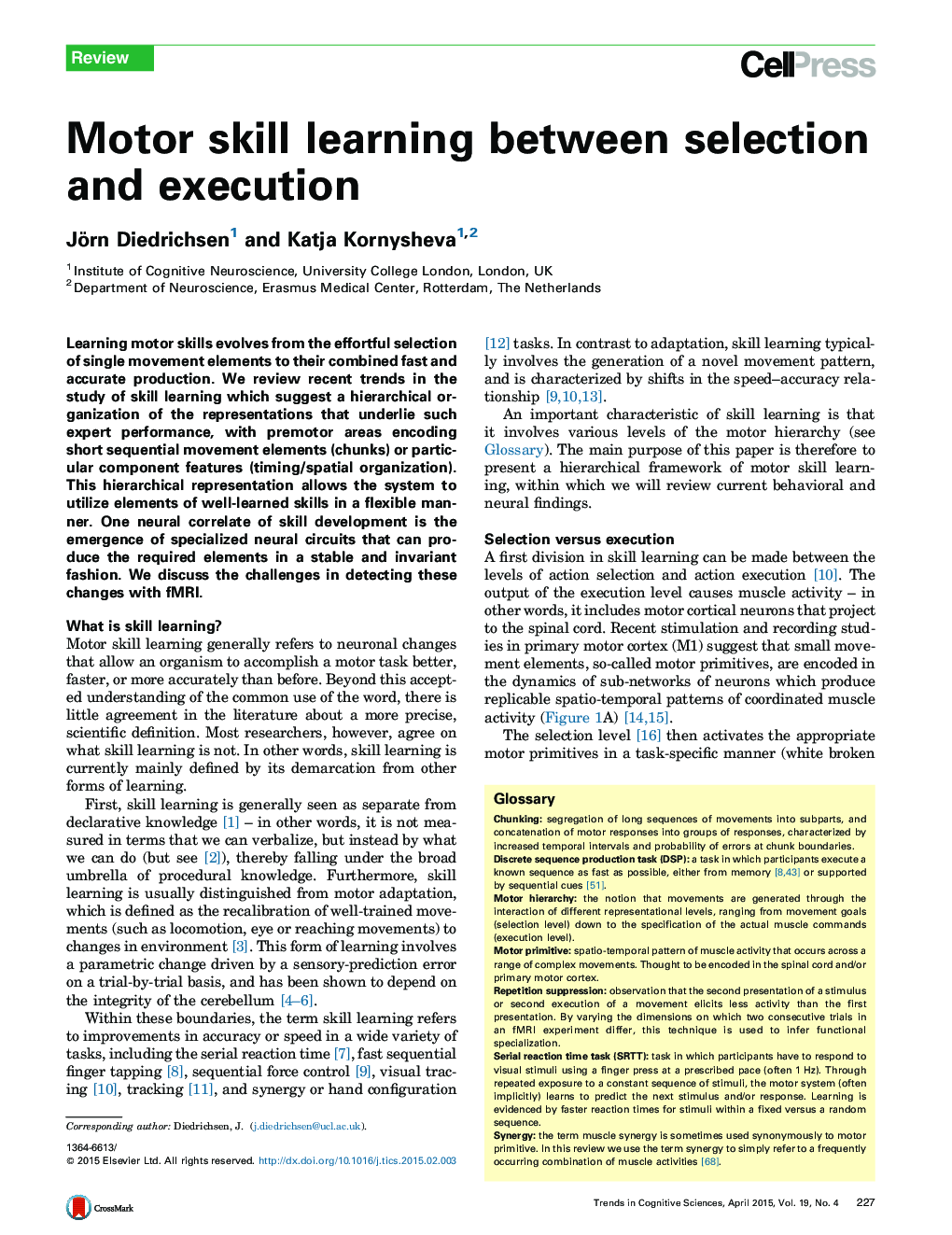| کد مقاله | کد نشریه | سال انتشار | مقاله انگلیسی | نسخه تمام متن |
|---|---|---|---|---|
| 141403 | 162868 | 2015 | 7 صفحه PDF | دانلود رایگان |
• Skill learning involves changes in selection and execution-related representations.
• Even highly-skilled movements are represented hierarchically.
• Chunking and modularity allow flexible production of skilled movements.
• Skill learning leads to reduced neural variability and specialized activity patterns.
Learning motor skills evolves from the effortful selection of single movement elements to their combined fast and accurate production. We review recent trends in the study of skill learning which suggest a hierarchical organization of the representations that underlie such expert performance, with premotor areas encoding short sequential movement elements (chunks) or particular component features (timing/spatial organization). This hierarchical representation allows the system to utilize elements of well-learned skills in a flexible manner. One neural correlate of skill development is the emergence of specialized neural circuits that can produce the required elements in a stable and invariant fashion. We discuss the challenges in detecting these changes with fMRI.
Journal: - Volume 19, Issue 4, April 2015, Pages 227–233
